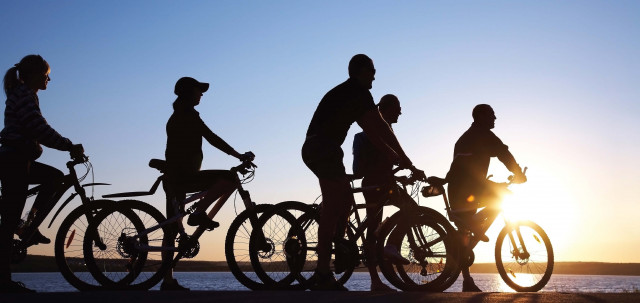Pedalling for health: Cycling all the way to a healthier, longer life
Only a few decades ago, the bicycle was considered an essential household item, both in rural and urban areas.

Bicycles have been a common means of transport in South Asia during much of the past century. However, with changing lifestyles in relatively recent times, they have been rapidly replaced by automotives such as cars, scooters and motorcycles.
In our country, bicycles were used by people from all walks of life. Only a few decades ago, the bicycle was considered an essential household item, both in rural and urban areas. People used to peddle to their offices and workplaces, schools, colleges and bazaars free of cost. Now, it is only the poor man’s ride.
Muhammad Aslam, 52, a peon in a governmental department in Islamabad, has been cycling from Mohanpura, Rawalpindi, to his office for nearly 30 years. He says he is still healthy and fit enough to cycle nearly 40km daily.
What started as a compulsion gradually became a choice for Aslam. He termed it the most economical means of transportation, as he cannot afford the high public transport fares. The locally manufactured bicycle he had purchased 20 years ago is still providing him good service.
Aslam said many of his colleagues who used to cycle their way to work have abandoned the two-wheeler in favour of either using public transport or motorcycles.
He is active, looks athletic for his age and feels content. “Thank God I feel as young as a 25-year-old, while others of my age are suffering from various diseases and have to make regular visits to the hostpital.”
In developed countries, people adopt cycling not only as a hobby but as a popular sport. In this country, we have a cycling federation but it has failed to promote cycling as a sport.
Mumtaz Butt, who owns a bicycle shop near Raja Bazaar, Rawalpindi, said that most people came to purchase bicycles for their children. He said bicycles with modern features were available in the market, but were too expensive for the common man to afford.
“Since competition among motorcycle companies led to a fall in prices and easy instalment payment schemes, people prefer to buy motorcycles. He said among the adults who bought locally manufactured bicycles, 99 per cent were from low income groups.
He said during the last few years the trend of using bicycles among school-going youngsters had also decreased, discouraged further by their parents who considered the congested roads unsafe. Now, private vans and taxis are providing pick and drop services for young students.
Cycling is not only good for health, it is also environment-friendly. Most people, however, tend to overlook the benefits of this easy means of transport while others feel ashamed of using it as it is considered the poor man’s transport. In developed countries, bicycles are still a favourite means of transport and cycling is regarded as great fun. Even ministers and high officials in European countries commute on bicycles.
Dr Ahsan, who has specialised in sports medicine from Holland, considers cycling to be the best exercise as it utilises major muscle groups, raising the heart rate to a beneficial extent. He said research proved that steady cycling burned approximately 300 calories per hour. A 30-minute daily cycle trip will burn off 11 pounds of fat in a year. For staying slim and smart, cycling with proper eating habits is the best and most economical way to reduce the risk of heart disease, high blood pressure, obesity and diabetes. New cyclists covering short distances can reduce their risk of death from heart disease by as much as 22 per cent. Dr Ahsan said moderate exercise was found to reduce levels of depression and stress, improve mood and raise self-esteem, and had also been found to relieve symptoms of premenstrual syndrome.
There can also be indirect benefits in terms of reducing injuries from falls, which can be seriously disabling, especially in older people. The strength and coordination that regular cycling brings makes that less likely. Physically active older people have much reduced rates of hip fracture.
A study found that “even a small amount of cycling can lead to significant gains in fitness”. The study found that aerobic fitness was boosted by 11 per cent after just six weeks of cycling ‘short distances’ four times a week. Cycling the equivalent of four miles to and from work in a day increased the aerobic benefits to 17 per cent.
Cycling, the researchers concluded, is one of the few physical activities that can be undertaken by the majority of the population as part of a daily routine.
Cyclists breathe in less fumes than car drivers. Cyclists and pedestrians actually absorb lower levels of pollutants from traffic fumes than car drivers, research on the subject has revealed.
There is a need to promote bicycle riding in the country not only as a healthy sports activity but also as the most economical and environment-friendly means of transport.
Published in The Express Tribune, January 23rd, 2011.



















COMMENTS
Comments are moderated and generally will be posted if they are on-topic and not abusive.
For more information, please see our Comments FAQ